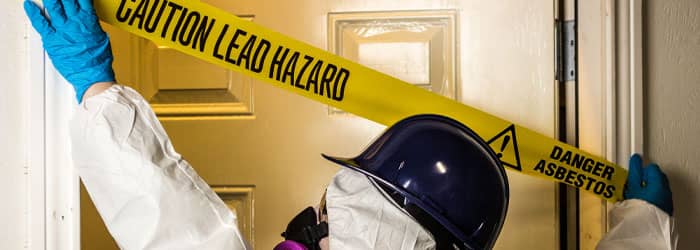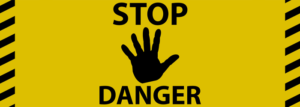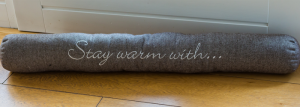PREVENT AND REMEDIATE LEAD & ASBESTOS EXPOSURE
Lead Paint
If your home was built before 1978, lead paint might have been used during the building of your house, and if it was built as late as the 1990s, materials containing asbestos may have been used too.
Common renovation, repair, and painting activities like sanding, cutting, chipping, and replacing windows, can disturb lead-based paint and asbestos creating hazardous lead dust and chips which can be harmful to adults, children, and pets.
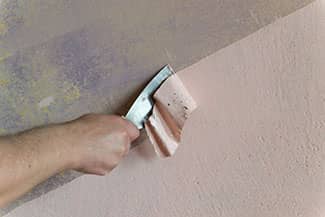
The Environmental Protection Agency’s (EPA) Renovation, Repair and Painting Rule per federal law requires contractors that disturb surfaces in homes, child care facilities and schools built before 1978 to be certified and follow specific work practices to prevent lead contamination.
Although the rule does not apply to homeowners renovating, repairing, or painting their homes themselves, it is imperative to set up safely, control the dust, and clean up completely.
Reduce the risk of lead exposure by hiring a certified lead inspector. If lead is present, it is highly recommended to have a trained and certified lead abatement contractor perform an abatement before you begin work. Locate contractors who perform lead abatement and inspection activities in your area. Remodeling contractors you hire for your project MUST give you this pamphlet before starting work.
Side note: If your home was built before 1978, and your house tested positive for lead paint, it must be disclosed when selling the home.
Asbestos
Asbestos is a mineral fiber that occurs in rock and soil. Because of its fiber strength and heat resistance, asbestos has been used as a fire retardant and in a variety of construction materials including:
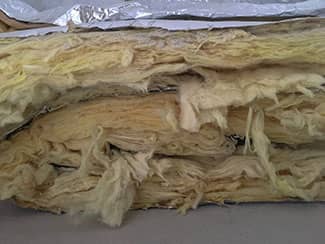
- insulation
- roofing and siding shingles
- ceiling tiles
- vinyl floor tiles
- backing on vinyl sheet flooring and adhesives
- paper products
- cement products
- textured paint and patching compounds
- walls and floors around wood-burning stoves
- hot water and steam pipes coated with an asbestos material or covered with an asbestos blanket or tape
Homes built before 1978 that have popcorn ceilings could contain asbestos. Asbestos-containing materials may release fibers when they are disturbed, damaged, removed improperly, repaired, cut, torn, sanded, sawed, drilled or scraped.
Unless it is labeled, it is nearly impossible to tell whether a material contains asbestos simply by looking at it. Err on the side of caution and treat the material as if it contains asbestos. Leave it alone until your home is inspected by a trained and accredited asbestos professional. Do not take samples yourself.
For slightly damaged asbestos-containing material, limit access to the area and not to touch or disturb it. If it is more than slightly damaged or you are going to make changes in your home that might disturb it, a trained and accredited asbestos professional is needed.
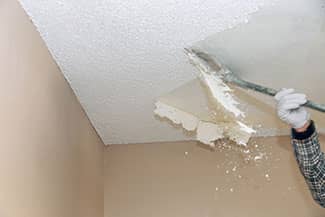
If building materials in your home aren’t damaged and won’t be disturbed, you do not need to have your home tested for asbestos. Material that is in good condition and will not be disturbed (by remodeling, for example) should be left alone.
Asbestos Do’s
- Leave undamaged asbestos-containing materials alone.
- Keep activities to a minimum in any areas having damaged material that may contain asbestos.
- Take every precaution to avoid damaging asbestos-containing material.
- Have removal and major repair done by people trained and qualified in handling asbestos.
- Have sampling and minor repair done by a trained and accredited asbestos professional.
Asbestos Don’ts
- Don’t store boxes or other items in your attic if it contains vermiculite insulation.
- Don’t allow children to play in an attic with vermiculite insulation.
- Don’t attempt to remove the insulation yourself.
- Don’t dust, sweep, or vacuum debris that may contain asbestos.
- Don’t saw, sand, scrape, or drill holes in asbestos-containing materials.
- Don’t use abrasive pads or brushes on power strippers to strip wax from asbestos flooring. Never use a power stripper on flooring that may contain asbestos.
- Don’t sand or try to level asbestos flooring or its backing. When asbestos flooring needs replacing install the new floor covering over it, if possible.
- Don’t track material that could contain asbestos through the house. If you cannot avoid walking through the area, have it cleaned with a wet mop. If the material is from a damaged area or if a large area must be cleaned, call an asbestos professional.

DIY Projects
If you are determined to remove a popcorn ceiling or chip paint yourself, Click Here for a list of safeguards outlined by the EPA.
Plan for and complete a home renovation, repair or painting project using lead-safe work practices.
Bottom Line: don’t risk your health or anyone else’s. When dealing with lead and asbestos, hire a professional to test your work area and perform the clean-up.
###
Photo Credits:
- Shutterstock
RELATED CONTENT:
- Blog: Should You Buy A Flipped House?
- Blog: Are There Nightmares Hidden In That Dream House
- Blog: Six Steps To Take Before Buying A Home In Arizona
- Blog: The 5 W’s Of Home Remodeling
- DIY FAQ: What Should I Look Out For In Purchasing A Flipped Home?
- DIY FAQ: Asbestos
- Podcast: Should You Buy A Flipped House?

